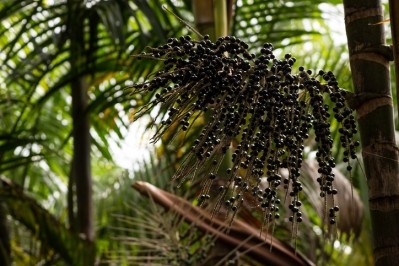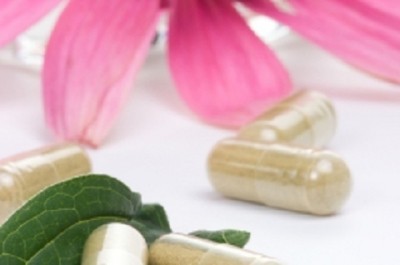Special edition: Botanicals
Synthetic botanicals standoff likely to continue despite Georgia ruling

A rose is a rose
First to a point of nomenclature. Among the disagreements about this class of molecules is a lack of consensus about what to call them.
“I’m something of a nomenclature nerd,” said consultant Steven Dentali, PhD, who held previous positions with Herbalife and as the chief science officer of the American Herbal Products Association. “To me, the term ‘synthetic botanical’ means the plastic plant in the corner. I prefer a term like ‘synthetically produced natural product’.”
Michael McGuffin, president of AHPA, also is not a fan of the term ‘synthetic botanical’. In its official responses to FDA, AHPA prefers to use the term ‘human synthesized botanical constituents’.
At the moment, FDA has taken the position, which was consistent between the initial draft guidance on New Dietary Ingredients issued in 2011 and the most recent version from August of last year, that these molecules are not legal dietary ingredients because they were never physically resident in a plant. According to FDA, the definition of a botanical does not extend to what it calls “synthetic copies of herbs.”
“An herb or botanical includes only plants, algae, fungi, their exudates (secretions, such as sap or resin), and their physical parts. A substance that has been synthesized in a laboratory or factory has never been part of an herb or other botanical and, therefore, is not a dietary ingredient,” the agency wrote in the draft guidance.
“We feel a chemical entity can be the same whether it was synthesized by a plant or in a laboratory. We feel FDA should treat them the same as if they were a plant constituent,” McGuffin said.
For attorney Marc Ullman, at counsel with the firm Rivkin Radler, this distinction goes beyond just a very narrow, legalistic reading of the statue. It verges on legal fiction.
“It goes beyond being exceptionally persnickety. It’s baseless. There is nothing in the statute that requires this. In essence this is arbitrary and capricious,” Ullman said.
Identity, not origin, is key
For Dentali, the nomenclature question drives at the heart of the issue. Dentali said the key point is identity, not origin. If a synthetic molecule is a precise copy down to stereoisomeric considerations of the molecule of botanical origin on which it is modeled, then it is same thing regardless of whether you got it from a pile of plants or from a reaction vessel. There is no scientifically valid reason to believe that the safety profiles would be different in the two cases, and the NDI statute is about providing the safety of new ingredients, he said.
Synthetic forms of natural compounds have been on the market for years. First to be developed were synthetic vitamins, and those have long been specifically allowed under federal law. Vanillin has long been offered in synthetic form as a lower cost alternative to ingredients derived from the vanilla bean. Later, chemists started to look at developing synthetic versions of bioactive compounds that have promising health benefits but are present in natural sources such as herbs or other plants in such trace amounts that they most likely could never be commercially viable. This development has been pursued for pure cost reasons as well. Recent examples include DSM’s synthetic resveratrol and astaxanthin and ChromaDex’s pTeroPure synthesized pterostilbene.
But the agency provided some wiggle room in the most recent version of the draft guidance that it did not in the 2011 version. The new draft guidance says that synthetic versions of natural compounds that have a history of use in the food supply could qualify as dietary ingredients. Two examples given in the guidance are vanillin and cinnamic acid. The agency also said that metabolites of dietary ingredients can be chemically synthesized and still be considered dietary ingredients so long as the starting material was a dietary ingredient.
“A metabolite may be synthetically produced, provided that the starting material is a dietary ingredient and the production process mimics the metabolic process in the body following ingestion,” the guidance reads.
Flanking march via GRAS
The new draft guidance does still proffer the same pressure release valve that the 2011 version did, that being the exemption for GRAS ingredients. If the ingredient has been judged to be GRAS (whether via self-affirmation or via a no objection letter from FDA) it is not subject to the NDI filing requirement. It’s a window of opportunity big enough to drive a bus through, and many companies have merrily taken that route. Both DSM and ChromaDex have self-affirmed GRAS status on their synthetic ingredients, DSM with ResVida (its synthetic resveratrol) and ChromaDex with pTeroPure a synthesized form of pterostilbene. It has become a way for ingredient suppliers to make something of a flanking maneuver around the agency’s entrenched position on synthetic ingredients.
Ruling could put FDA’s stance in jeopardy
Cracks may be starting to show in that rampart with the decision by a federal district judge in Atlanta in FDA’s case against Hi Tech Pharmaceuticals, a sports nutrition company that for years has unapologetically been selling the banned stimulant-like ingredient DMAA. FDA won its case, but the ruling potentially weakens agency’s stance on the question of synthetic versions of constituents of botanicals.
Judge Willis B. Hunt, Jr.’s decision took a dim view of the practice of some sports nutrition formulators of trying to link molecules of interest with obscure botanical antecedents.
“It is inconceivable that in passing the DSHEA Congress intended for supplement manufacturers to take a chemical that heretofore had only been manufactured in a laboratory and to scour the globe in search of minuscule amounts of that chemical in obscure plants so that they could declare the substance a dietary ingredient under the statue,”he wrote.
However, Hunt ’s ruling appears to open the door for the legality of synthesized versions of botanical ingredients in cases where there has been a history of extraction from a source found in nature. FDA’s stance on the illegality of synthetic copies of botanical constituents makes no reference to the concentration of those ingredients in the plant sources. Hunt’s ruling seems to indicate that if you can find in a plant in a usable amount, you can make it in a test tube, too.
“Congress intended that there must be at least some history of the substance in question having been extracted in usable quantities from a plant or plant-like organism,” Hunt wrote.
















